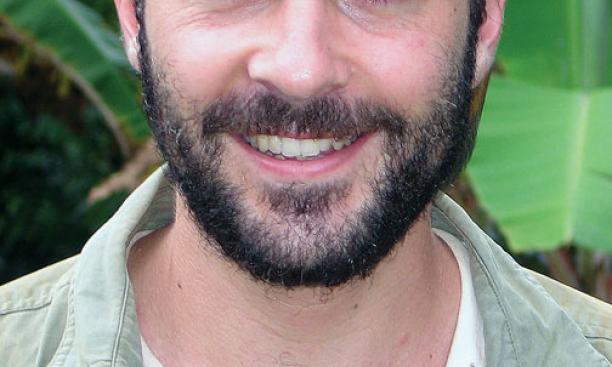


Dung beetles play a distinct role in ecological systems. Guided by an acute sense of smell, they serve as a flying cleanup crew, seeking out and feeding on bacteria-rich waste left by larger animals.
But in a Peruvian rainforest, ecologist Trond Larsen *06 found at least one species of dung beetle that uses its sense of smell to find a different food source: millipedes. The millipedes secrete a repellent odor as a defense mechanism, and to beetles in the species Deltochilum valgum, it has become an attractive smell. The beetle, though ill-suited as a predator, doggedly attacks the millipede, grasping with its hind legs and digging its head between the segments of the millipede’s body.
“It’s a lot of work,” says Larsen, a postdoctoral researcher in Princeton’s Program in Science, Technology, and Environmental Policy (STEP). “It takes a lot of time, and even then, it’s not always successful.”
D. valgum, the first known dung beetle species that acts exclusively as a predator, probably made the switch to its new food source because of competition, and Larsen is collecting other dung beetles from the same genus in hopes of finding genetic similarities, or dissimilarities, in the predatory species and its nearest peers.
Invertebrates like dung beetles often are used to shed light on larger questions about biodiversity. Because so many species of dung beetles compete for the same resources, Larsen explains, “they’re good for answering questions about how diversity can be maintained.” They also are a useful “indicator group” because they are sensitive to changes in habitat caused by human activities, including hunting, which depletes their food source.
Larsen’s work, supported by Princeton and the World Wildlife Fund, applies some of the lessons of ecology to real-world public policy. In one project, he is examining strategies to mitigate the effects that the new interoceanic highway through Brazil and Peru may have on some of the most biologically diverse areas of the world.
Larsen also is interested in “beta diversity,” which measures the change in species composition across geographic space and provides valuable data for conservation efforts. Ecologists know relatively little about how widely species are distributed and often rely on the assumption that species composition is the same in areas that have the same terrain and climate. But Larsen questions that notion, particularly for invertebrates.
To test his ideas, Larsen makes frequent trips to field sites. In February and March, he spent time in Peru, and in May, he will return to Peru and make his way to Brazil. In July, he’ll fly to Borneo.
